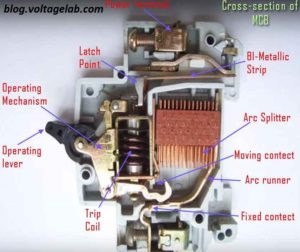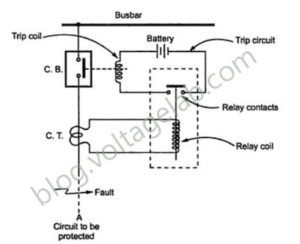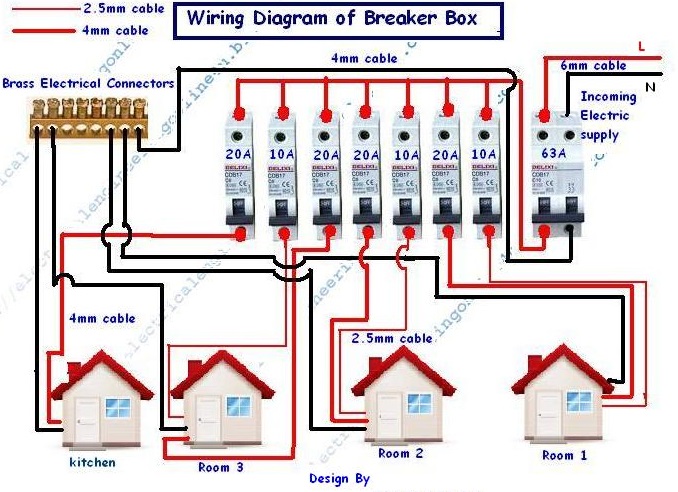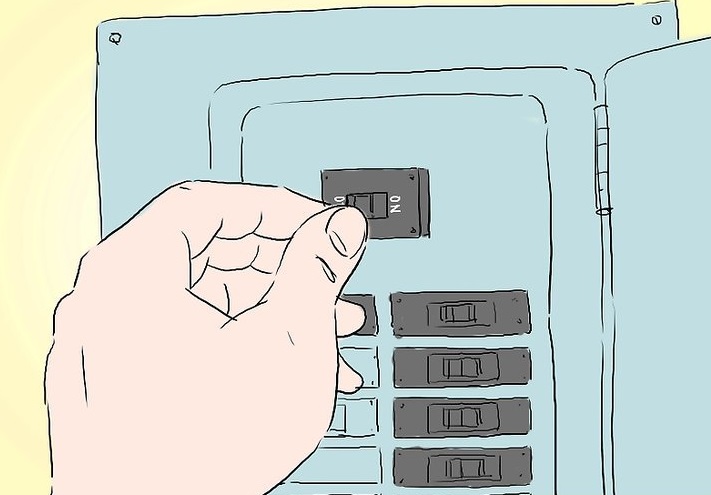Circuit breakers are vital safety devices that protect electrical systems from overloads, short circuits, and faults. By automatically cutting off electricity during an issue, they help prevent fires, equipment damage, and shocks. This guide covers the basics of circuit breakers, including their types, how they work, and installation tips.
Table of Contents
What is a Circuit Breaker?
In simple terms, a circuit breaker is an automatic device that provides safety. It is a device that keeps electrical and electronic equipment safe. When there is an excessive flow of electricity in a line, it can cause accidents in the equipment, which the circuit breaker protects against.
In other words, a Circuit Breaker is a type of device that can open or close a circuit under all conditions (no-load condition, full-load condition, and faulty or defective condition).
Alternatively, a Circuit Breaker is a device that automatically disconnects a faulty line from the source.
What does a Circuit Breaker do?
A circuit breaker automatically protects the circuit when the voltage exceeds the design voltage of the circuit.
- In case of a short circuit in the AC line (line-to-line or line-to-neutral).
- When there is an excessive load.
- When the voltage increases.
Types of Circuit Breakers
Based on arc or fire extinguishing
- Oil Circuit Breaker.
- Air Circuit Breaker.
- Sulfur Hexafluoride Circuit Breaker.
- Vacuum Circuit Breaker.
Based on service
- Outdoor Circuit Breaker.
- Indoor Circuit Breaker.
Based on operating mechanism
- Spring-operated Circuit Breaker.
- Pneumatic Circuit Breaker.
- Hydro-electric Circuit Breaker.
Based on voltage level installation
- High Voltage Circuit Breaker
- Medium Voltage Circuit Breaker
- Low Voltage Circuit Breaker
Additionally, they can be categorized as follows
- Magnetic Circuit Breaker.
- Common Trip Circuit Breaker.
- Thermal Circuit Breaker.
- Disconnecting Circuit Breaker.
- Carbon Dioxide Circuit Breaker.
And others.
Construction and Operation of Circuit Breakers

A Circuit Breaker essentially consists of two main parts:
- Fixed Contact.
- Moving Contact.
We generally use Miniature Circuit Breakers (MCB) in homes. The image below shows a Miniature Circuit Breaker.
This is a commonly used circuit breaker in homes. The image shows the operating lever, arc splitter, moving contact, fixed contact, trip coil, etc.
Operation:
Here are some basic operational principles of a circuit breaker:
- In normal conditions, a Circuit Breaker is operated manually (remote control or others).
- In fault conditions, the Circuit Breaker operates automatically.
- In normal conditions, the moving and fixed contacts remain connected and electricity flows through the circuit.
- Both the CT (Current Transformer) and relay work for automatic interruption.

Working Steps
- When the current flowing in the line exceeds the design current (due to fault), the Current Transformer (CT) reduces the excess current and sends it to the relay coil.
- When the relay coil experiences peak current (more than the specified current), it activates and the relay’s moving contact disconnects the circuit.
- Then, the trip coil is energized through the battery source of the trip circuit, and it breaks the contact.
Circuit Breaker Wiring Diagram:
Typically, the installation of a circuit breaker depends on the type of load used and the maximum current rating of the load.

The image above shows different ratings of circuit breakers used for each room in a complete house based on load and power. Using separate circuit breakers for each room helps in fault detection. Additionally, separate circuit breakers should be used for high-power loads such as microwave ovens, air conditioners, refrigerators, irons, etc.
What rating of Circuit Breaker should be used?
The rating of a Circuit Breaker depends on the type of load. For example:
- For resistive loads: It is advisable to use a breaker with a rating three times the total ampere rating of the load, such as heaters, irons, filament lights, etc.
- For inductive loads: Inductive loads, which have coils, like ceiling fans, electric motors, table fans, air conditioners, transformer-driven equipment, etc., require a breaker rated six times the total ampere rating of the load. This is because inductive loads draw 3 to 6 times the current at startup, gradually returning to normal levels.
- For capacitive loads: Capacitive loads draw a high amount of current initially for a very short time, which is not as prolonged as inductive loads. This is called inrush current. For safety, it is better to use a breaker rated six times the load’s total current to reduce the risk of tripping due to inrush current.
Rules for Installing Circuit Breakers:
We use circuit breakers in homes, industries, educational institutions, and various places. However, there are several rules to follow for proper installation.

- Determine the Current Rating: First, calculate the current rating of the load you will be using the circuit breaker with. You can use the formula I = W/V for this. Typically, the wattage is mentioned on the equipment, from which you can determine the current by considering the supply voltage.
- Identify the Type of Load: Determine what type of load is connected to the circuit breaker. In homes, different types of loads are used, so for safety, consider the maximum rating.
- Select the Appropriate Circuit Breaker: For inductive loads, use a circuit breaker with a rating 3 to 6 times higher than the current value. For capacitive loads, the circuit breaker rating should be 6 times the load current. For resistive loads, the circuit breaker rating should be 20% higher than the load current. For example, if the load draws 1 ampere, the circuit breaker should be rated at 1.2 amperes.
- Use Separate Circuits for High Ampere Loads: For each high ampere load, use a separate circuit. Examples of high ampere loads include high-power motors, water pumps, air conditioners, electric heaters, etc.
- Use a Closest Available Rating: If the calculated circuit breaker rating is not available in the market, use the closest available rating. For example, if the load current is 10 amperes but a 10-ampere breaker is not available, a 15-ampere breaker can be used.
Advantages of Using Circuit Breakers:
- Faster Response: Circuit breakers operate much faster than fuses.
- Higher Sensitivity: They are more sensitive than fuses and can be used multiple times.
- Durability: Circuit breakers are more durable than fuses over time.
- Testing Capability: Many circuit breakers have a test button to ensure they are functioning properly.
When Does a Circuit Breaker Trip?
Miniature circuit breakers typically trip in three types:
- Type B Circuit Breaker: Trips when 3 to 5 times the rated current flows.
- Type C Circuit Breaker: Trips when 5 to 10 times the rated current flows.
- Type D Circuit Breaker: Trips when 10 to 20 times the rated current flows.
The specific conditions for tripping are usually mentioned in the manual or datasheet.
What is Surge Voltage?
In an AC circuit, the presence of excessive voltage for half a cycle or less is known as surge voltage. Circuit breakers usually trip due to reasons such as connecting a load higher than the specified rating or short circuits. Therefore, if a circuit breaker trips, the fault should be identified before turning it back on.
Conclusion:
In summary, a circuit breaker is a critical safety device for protecting electrical circuits and equipment. It helps prevent electrical accidents by automatically disconnecting faulty circuits. By understanding the types, operation, and proper installation of circuit breakers, you can ensure the safety and reliability of your electrical systems.


